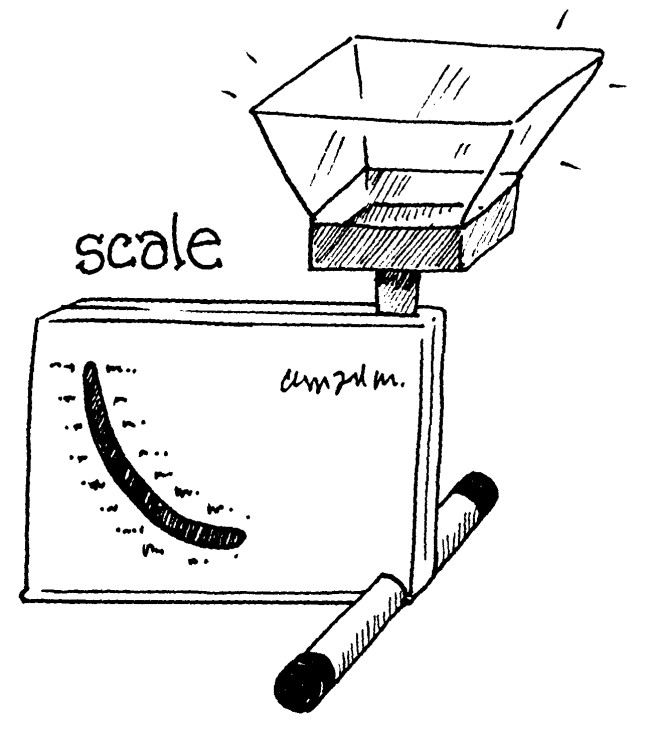Bread Machines For Dummies (14 page)
Read Bread Machines For Dummies Online
Authors: Glenna Vance,Tom Lacalamita

It comes in handy at times to know the following standard equivalents:
 3 teaspoons equal 1 tablespoon
3 teaspoons equal 1 tablespoon
 4 tablespoons equal 1/4 cup
4 tablespoons equal 1/4 cup
 5 tablespoons + 1 teaspoon equal 1/3 cup
5 tablespoons + 1 teaspoon equal 1/3 cup
 Pinch or dash equal less than 1/8 teaspoon
Pinch or dash equal less than 1/8 teaspoon
 1/3 tablespoon equal 1 teaspoon
1/3 tablespoon equal 1 teaspoon
 1/2 tablespoon equal 1 1/2 teaspoons
1/2 tablespoon equal 1 1/2 teaspoons
 2/3 tablespoon equal 2 teaspoons
2/3 tablespoon equal 2 teaspoons
 1/8 cup equal 2 tablespoons
1/8 cup equal 2 tablespoons
 3/8 cup equal 1/4 cup + 2 tablespoons
3/8 cup equal 1/4 cup + 2 tablespoons
 5/8 cup equal 1/2 cup + 2 tablespoons
5/8 cup equal 1/2 cup + 2 tablespoons
 7/8 cup equal 1 cup less 2 tablespoons
7/8 cup equal 1 cup less 2 tablespoons
To measure 1/8 teaspoon, measure 1/4 level teaspoon, mark off a half with the point of a knife, and remove.
Some bread machine hobbyists get so enthused that they decide to get technical and want to weigh all their ingredients like professional bakers do. I can assure you that this degree of precision is not necessary to make excellent bread in a bread machine. But a small kitchen scale like the one in Figure 7-3 does come in handy when you are making rolls. It helps to keep them uniform in size. We use 2 ounces as a standard size for rolls. The same holds true when you are making a braid. If all three strands are the same size, the braid will look balanced and even.
Figure 7-3: |  |
.jpg)
Tearing may be harmful to your dough. To divide dough into portions, use a dough scrapper, a flat edge, or kitchen scissors, and cut the dough. Do not pull or tear dough apart as this damages the dough structure, and your bread may not rise properly.
Kitchen scales are available in three types: spring, balance, and electronic. Spring models are inexpensive, and quick to use, but over time the spring loses its tautness and thus its accuracy. Balance scales are dependably accurate, but they require the adjusting of weights by hand to coincide with desired weight to be measured. Electronic battery-operated scales are very precise.

Be sure to get a scale that weighs in increments no larger than 1/2 ounce. Glenna uses a small, one-pound spring scale, but if she were replacing it she would purchase â at least â a five pound scale, as she finds that she often wants to weigh heavier foods. Also, get a scale that has a measuring cup and a tray so you can use either.
